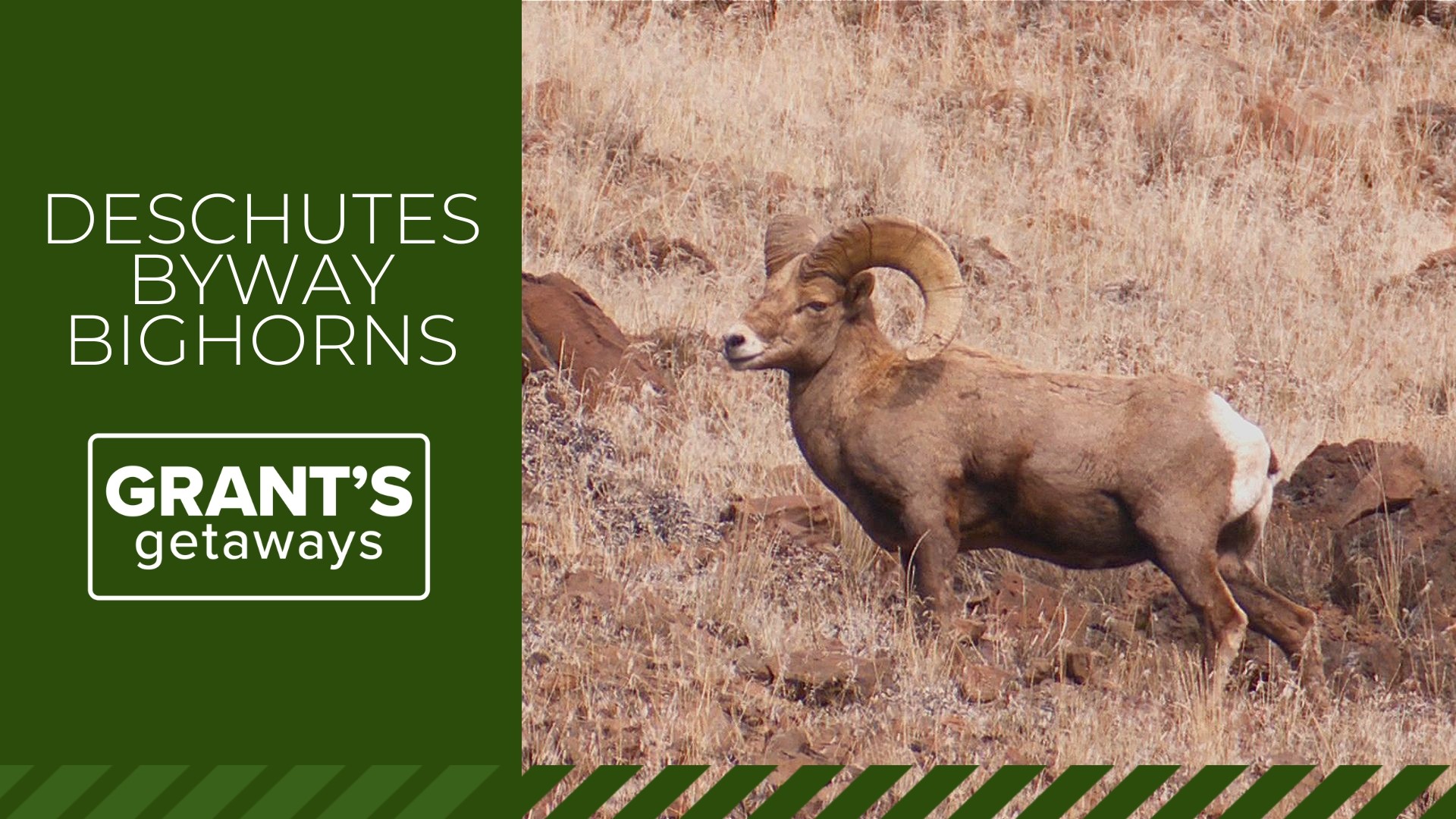MAUPIN, Ore. — Oregon’s backroads are the best! They can lead you down trails to secret hideaways, like the one that is less than two hours from Portland — the Deschutes River Back Country Byway — and it may feel a million miles away. It's where the action is to see the Deschutes River byway bighorns!
At Lake Billy Chinook near Madras, there is an age-old predator-prey game amid the timeless rimrock country this time of year. It’s a place where three rivers called Metolius, Crooked and Deschutes merge into a 7-mile-long watery playground.
Oregon State Parks Manager Paul Patton said the lake has long been a drawing card for eagles, too!
“You will see bald eagles and golden eagles in their daily routines," Patton said. "You never know what’s going to happen at one of the viewpoints and at Overlook Park.”
Less than an hour away at Maupin, you can begin a unique journey along the Deschutes River for an exploration that provides a direct route to solitude on a gentle road that winds for more than forty miles.
The Lower Deschutes River Back Country Byway is surrounded by canyon walls that tower above lonesome boaters who own the river this time of year.
Many of the columnar basalt cliffs reach hundreds of feet high, where wildlife biologist Jeremy Thompson watches for movement among the rocks.
“In the sun, the bighorn sheep horns shine a bit yellow and I have heard them referred to as ‘bananas,’ so I am looking for bananas on the hillsides,” noted Thompson with a smile.
The Deschutes Byway hides bighorn sheep, and it takes a keen eye to pick out the sheep that blend so well with the background.
The females, called "ewes,” gather in small herds, added Thompson.
“They are pretty gregarious and like to hang out together and you’ll find little groups of 10-12 generally throughout the fall and winter.”
On the other hand, Thompson added that the male bighorn sheep, called “rams,” are more solitary.
“All bighorns have horns, but the ewes typically don’t get over 6-7 inches long," he said. "And once a ram gets to more than a year old, his horns are much bigger than a ewe’s. In fact, as the ram grows older you will see the horns curling way back and are much bigger at the base.”
Oregon’s bighorn sheep went extinct in the 1940s due to over-hunting and disease, but successful reintroduction programs began in the early 1990s, and now the Deschutes River Canyon bighorn population reaches nearly 600.
If you wish to travel to the Deschutes and watch for bighorns, dress warmly, don’t forget binoculars — and most of all, bring patience!
“Many people will travel the byway, stop and look and not see them,” added Thompson. ”Well, if you just sit down and watch and look closely at some of these bigger cliff complexes, eventually they will see them. They are there!”
I feel a certain wonder when visiting places like this, where the geology is worn so well on the landscape’s sleeve.
That is especially true early in the morning or late in the day when the sun dances across the cliff’s surfaces and shadows lengthen to cast an eeriness to the place.
It’s a drive that will set your clock back — and you’ll be the better for it, too.
Be sure to watch the weekly half hour program of Grant’s Getaways. The show airs each Saturday and Sunday at 4 p.m. on KGW.
For something different, you can follow my Oregon adventures via the Grant’s Getaways Podcast. Each segment is a story-telling session where I relate behind the scenes stories from four decades of travel and television reporting.
You can also learn more about many of my favorite Oregon travels and adventures in the Grant’s Getaways book series, including:
- "Grants Getaways I," Photography by Steve Terrill
- "Grant's Getaways II," Photography by Steve Terrill
- “Grant’s Getaways: 101 Oregon Adventures,” Photography by Jeff Kastner
- “Grant’s Getaways: Guide to Wildlife Watching in Oregon,” Photography by Jeff Kastner
- “Grant’s Getaways: Oregon Adventures with the Kids,” Photography by Jeff Kastner
The book collection offers hundreds of outdoor activities across Oregon and promises to engage a kid of any age.
You can reach me: Gmcomie@kgw.com

